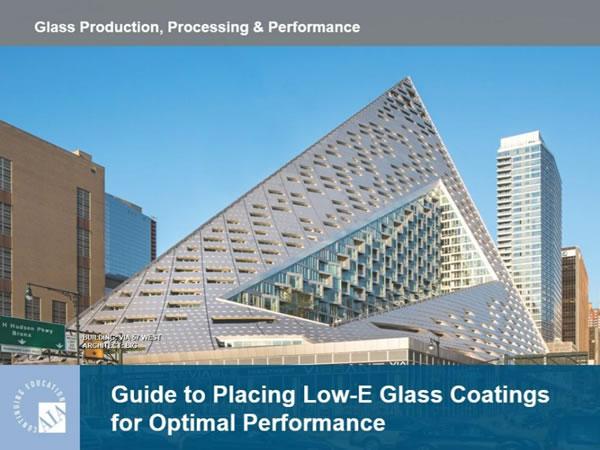|
Two updated American Institute of Architects Continuing Education System (AIA CES) registered courses can be accessed via Vitro Architectural Glass’ online “Continuing Education” portal.
“Understanding Low-E Coatings” shows how high-performance architectural glass can significantly improve the energy efficiency of buildings while simultaneously reducing their operating costs and carbon emissions. The course examines how low-emissivity (low-e) coatings help manage the transmittance of solar energy into buildings, and how the coatings’ relative effectiveness can be compared using industry-standard glass-performance measures. Architects also will learn about the two manufacturing processes for passive and solar control low-e coatings, and how the energy, environmental and economic benefits of low-e glass have been quantified through advanced energy modeling.
“Glass Production, Processing and Performance” examines different types of glasses, including clear, tinted and low-iron glasses, and highlights common application processes for coated low-e glasses and their effect on buildings’ energy and environmental performance. Flat glass fabrication and processing methods also are featured, as well as technical considerations of thermal breakage, wind load, sound attenuation and size limitations for glass specification.
Robert Struble, manager, brand and communications, Vitro Architectural Glass, said the new courses not only support architects’ professional development but also meet their practical needs. “Vitro Glass is committed to providing critical continuing education content,” Struble explained. “As the energy efficiency and performance characteristics of glass become increasingly vital and ever more complex, it’s important that architects are equipped with the latest information to meet their design goals and optimize environmental conditions to enhance occupant comfort.”
Both courses are designated as providing Health, Safety and Welfare (HSW) learning units by the AIA. They can be taken online for no charge at Hanley Wood University. “Understanding Low-E Coatings” also is available at BD&C University, AECDaily, Architectural Record Continuing Education Center and The Architect’s Newspaper CEStrong Platform.
In addition, both courses can be delivered onsite in a classroom setting by Vitro Glass representatives throughout the U.S. Instruction lasts one hour.
Two updated American Institute of Architects Continuing Education System (AIA CES) registered courses can be accessed via Vitro Architectural Glass’ online “Continuing Education” portal.“Understanding Low-E Coatings” shows how high-performance architectural glass can significantly improve the energy efficiency of buildings while simultaneously reducing their operating costs and carbon emissions.

Architects who take the updated American Institute of Architects Continuing Education System (AIA CES) registered courses via Vitro Architectural Glass’ online “Continuing Education” portal will learn about the two manufacturing processes for passive and solar control low-e coatings – including the MSVD coating process illustrated above.

“Glass Production, Processing and Performance,” is one of two updated American Institute of Architects Continuing Education System (AIA CES) registered courses posted to Vitro Architectural Glass’ online “Continuing Education” portal. Architects who take the course will learn about different types of architectural glasses, including clear, tinted and low-iron glasses, as well as common application processes for coated low-e glasses and their effect on buildings’ energy and environmental performance. The illustration above demonstrates two options for low-e coatings placement to maximize insulating performance in a triple-pane insulating glass unit.
|

 600450
600450


 600450
600450

Add new comment